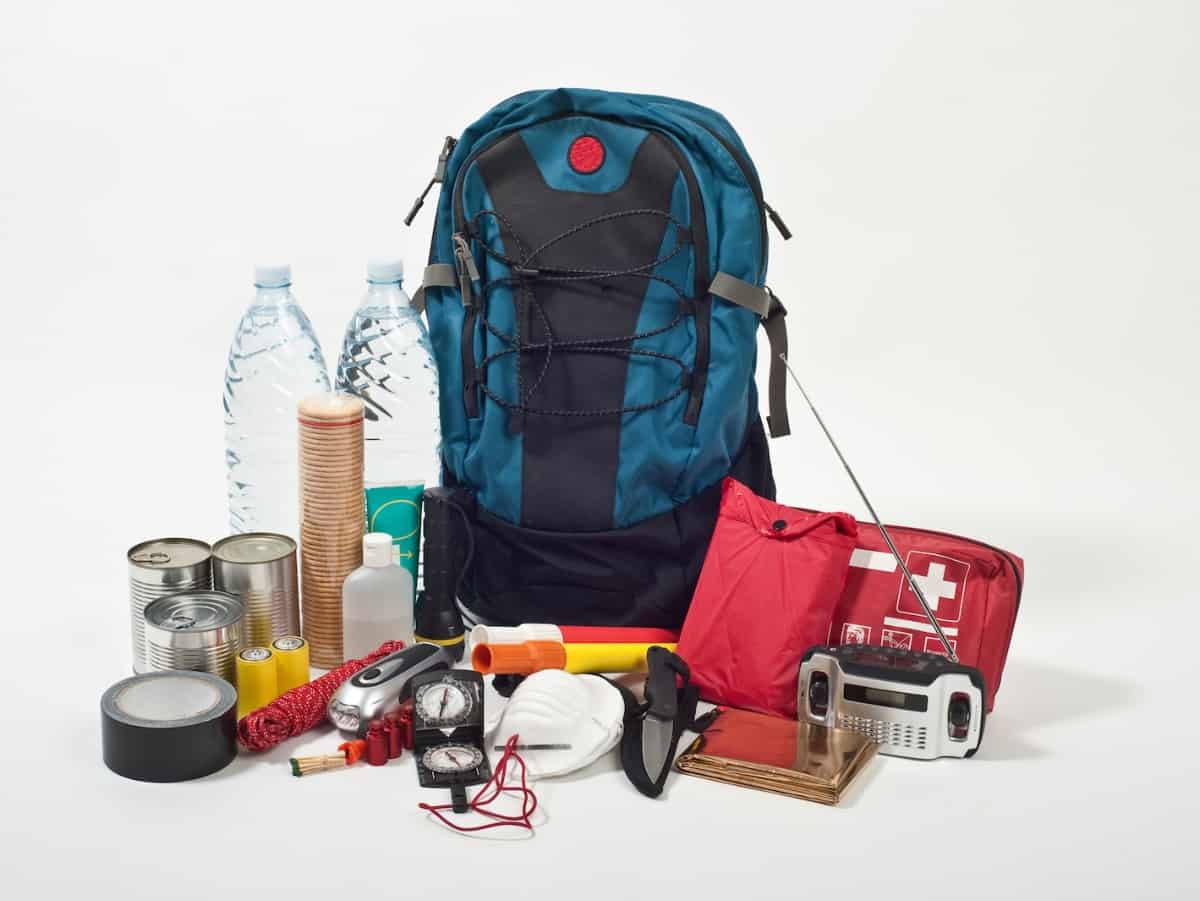With the spring storms in full effect, preparing for severe weather is of utmost importance. When it comes to anything, being proactive is essential to keep yourself and your family safe. Severe weather is defined as any weather activity that has the ability to affect human life. This can include tornadoes, severe storms with hail, hurricanes, snowstorms, or flooding.
Preparing for Severe Weather: Before the Storm
Before the storm hits, there are measures you can take to prepare for severe weather. The most important thing you can do is be prepared and be informed.
You can prepare for severe weather by anticipating a power outage, so unplug electronics to protect against electrical surges. Additionally, you can turn up the cold settings on your refrigerator to keep your food as cold as possible in case you lose power. Another great way to stay prepared is to keep your shoes on and your wallet on or near you. This way, if your home is destroyed, your feet are covered and you have identification on you.
To stay informed, keep up to date on the weather radar, reports, and alerts. Even if you’re taking cover, use your phone or a weather radio to get up to date information regarding weather. Keep informed by knowing the best spot in your home to take cover and remember the importance of covering your head and staying away from windows.
Tornado Watch Versus Warning
If you open up your weather app or watch the news, you’ll often hear terms like “severe weather watch” and “severe weather warning.” Additionally, you could hear phrases involving tornadoes, such as “tornado watch” or “tornado warning.” But, what’s the difference between the two words watch and warning?

Severe Weather or Tornado Watch
The watch is issued when the conditions are favorable towards a development of tornadoes. Favorable conditions include instability in the atmosphere. This t ypically occurs when there is moist air close to the ground and cool dry air in the winds. Additionally, if there are changes in wind speed and direction, there is an increased likelihood of a tornado formation.
There are differing lengths of how long a watch can last. Typically, you’ll see the duration between four and eight hours and well in advance of the storm beginning. This helps you take the time to check your weather radar and make necessary adjustments. These adjustments can be something as easy as moving your car in the garage, leaving work a little earlier than normal, or making alternative plans for where you’re staying during the storm. For example, if you live in a high rise apartment, you might want to find a safer place to stay.
Additionally, watches are created for different counties. So, your county might be under a severe weather or tornado watch, but the county next to you isn’t. If you live on the border of two counties, be cautious and keep an eye on the weather. Once watches have expired or changes have been made, the local news will update you.
Severe Weather or Tornado Warning
While a watch means that you’re under the possibility of something happening, a warning means something more serious. Typically, a tornado warning is issued and indicated when a funnel has been sighted by weather spotters. This means that if you’re under a warning, you need to take shelter immediately. If a warning has been issued, it will include information about where the funnel clouds were spotted and any towns that could be in the path. It’s important to remember that tornadoes can change direction easily, so if your town isn’t initially listed, it doesn’t mean you’re safe from the tornado.
Tornado warnings usually last for around 30 minutes, but continue to take caution and shelter until the warning has been cancelled. Remember, when it comes to preparing for severe weather, stay informed and stay proactive.

Protecting Your Car
Not everyone is lucky enough to have an attached and covered garage to store their vehicle. Having a car outside during a hail storm is scary, you’re just watching ice pellets hit your car and hoping that your windshield won’t shatter. Instead of crossing your fingers and hoping for the best, you can take these preventative measures to protect your car. While unconventional, these are great last minute tips. For a more comprehensive list of ways to protect your car during severe weather, read our blog here.
- Cover your car with a comforter or a blanket. These large and sturdy blankets don’t guarantee complete protection, but they do offer a barrier between your car and the hail. If you don’t have a bulky blanket, you can always use towels.
- Bubble wrap! Bubble wrap is used to secure packages during shipment, and it can help protect your car during severe weather. Before the hail falls, layer the bubble wrap around your car. If applicable, secure and strap the material down with something sturdy to ensure that it won’t blow away.
- Floor mats. If all else fails, use the floor mats inside your car to place over your sunroof and windshield. While this isn’t going to fully protect your entire vehicle, it’s offering easy coverage for the vulnerable glass.

Communication Plans For Preparing for Severe Weather
In order to protect your family in preparing for severe weather, you need to make sure to have a plan that has been communicated to the whole family. You’re not always going to be all in the same house during severe weather, so make sure that there is an emergency plan that everyone is familiar with. For example, if your son is with his friends, how will he know how to find you? Or, if you’re at work and not home, will your kids know where to seek shelter within your home? These are the scenarios that are reasons for having a plan, as preparing for severe weather needs these proactive measures!
Here are important items to consider when creating your family emergency plan:
- Have a well stocked emergency supply kit on hand. We’ll get into what you want in that kit below!
- Find your safe spot. This could be a basement (if applicable), a bathroom, or an interior closet. Not sure where your safe spot should be? Read our guide to tornado preparedness here.
- Locate where your homes gas and water valves are located in case you need to shut them off
- Find a spot to meet in case the family is separated. This could be a school, church, or park.
- Create emergency contacts for both in town and out of town.
- Keep photos and video of your home in case it has been destroyed.
- Have emergency cash on hand in case of a power outage.
- Keep your gas filled in your car.
- Make sure that your pets are all tagged or chipped in case they get out and you cannot find them.
- Make sure your kids understand an emergency plan in case they’re at school. For example, listen to your teacher and make sure to cover your head.

How to Build an Emergency Kit
Having an emergency kit is an essential part of preparing for severe weather. There is no crystal ball to know what will happen to your home, so having a kit for emergency purposes is so important. Here are some items that are important to include within your emergency kit.
- Water. The idea with water is to prepare one gallon per day for several days. This includes drinking water and sanitation. This can be gallon jugs or bottled water that you keep in your shelter area.
- Food. Try to keep a three day supply of non perishable items. Power often goes out during severe weather, so make sure to keep non perishable items to ensure that you don’t give yourself any food borne illnesses.
- Battery operated radio with tone alert. This is crucial for instances when your power goes out and you still need to have frequent weather updates.
- Flashlight.
- First aid kit. Keep this one separate from your regular first aid kit so you know it’s fully stocked and nothing is missing from it.
- Extra batteries
- A whistle in case you need to signal for help. This is important in case a tornado demolishes your home and you’re stuck underneath the rubble.
- Keep some extra masks in your kit. We’ve all stocked up in the last year, so put some extras in your kit. This helps to filter out contaminated air and dust.
- Can opener for the food
- Backup battery chargers for your phone.
- Supplies for your pet! Keep extra ziploc baggies of food and an extra bowl or two in your safe spot.
For best use, keep the emergency kit in the area where you will seek shelter. For example, if you’re seeking shelter from the tornado in your basement bathroom, keep the kit in that area.



